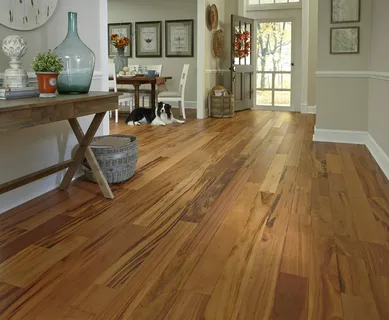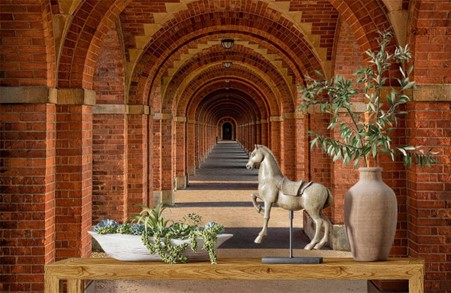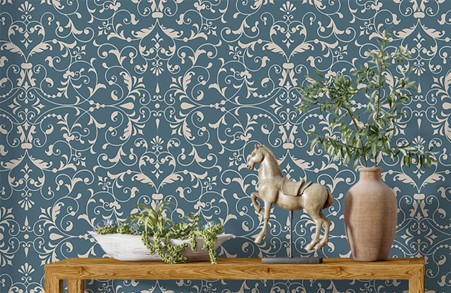Wooden flooring stands as a timeless choice, adding warmth, character, and sophistication to any space. When considering wooden flooring, the selection of the right material is crucial for achieving the desired aesthetic, durability, and overall performance. In this comprehensive guide, we will delve into the various wooden flooring Dubai materials available, exploring their characteristics, advantages, and considerations to help you make an informed decision for your home.
Hardwood Flooring: Classic Elegance:
Hardwood flooring is the epitome of classic elegance, known for its enduring beauty and natural charm. It is crafted from solid wood planks, typically sourced from hardwood trees such as oak, maple, cherry, or walnut. Hardwood floors offer timeless appeal, with each plank showcasing unique grain patterns and natural variations. While oak remains a popular choice for its durability, hardwood flooring allows for a range of wood species to suit different styles and preferences.
Advantages:
- Timeless aesthetic that enhances with age.
- Can be sanded and refinished multiple times.
- Adds significant resale value to homes.
- Natural variations in color and grain provide a unique look.
Considerations:
Susceptible to scratches and dents.
Vulnerable to moisture, requiring careful maintenance.
Higher initial cost compared to some alternatives.
Engineered Wood Flooring: Stability and Versatility
Engineered wood flooring is a versatile alternative to solid hardwood, offering enhanced stability and resistance to environmental factors. It consists of layers of wood veneer stacked in a cross-grain configuration and topped with a hardwood wear layer. This construction minimizes the expansion and contraction seen in solid wood, making engineered wood suitable for various environments, including areas with fluctuating humidity levels.
Advantages:
- Enhanced stability, minimizing expansion and contraction.
- Suitable for installation in basements and over radiant heating.
- Wide range of wood species and finishes available.
- Can be sanded and refinished, depending on the thickness of the wear layer.
Considerations:
Limited refinishing compared to solid hardwood.
Quality varies with the thickness of the top hardwood layer.
Prone to water damage if exposed to excessive moisture.
Bamboo Flooring: Sustainability with Style:
Bamboo flooring has gained popularity for its sustainability and unique aesthetic. While not technically wood, bamboo is often classified under wooden flooring due to its similar application. Bamboo is a rapidly renewable resource, making it an eco-friendly choice. Bamboo flooring comes in various styles, including horizontal and vertical grain patterns, as well as strand-woven bamboo for increased durability. Read more: https://www.routineblog.com/
Advantages:
- Rapidly renewable and environmentally friendly.
- Harder than many hardwoods, offering durability.
- Unique grain patterns and color variations.
- Resistant to moisture, making it suitable for different areas.
Considerations:
Quality varies based on the manufacturing process.
Prone to scratches, although strand-woven bamboo is more durable.
Limited refinishing potential compared to hardwood.
Laminate Flooring: Budget-Friendly Elegance:
Laminate flooring, while not made of real wood, replicates the look of wood through high-resolution images and embossing techniques. It is composed of multiple layers, including a high-density fiberboard (HDF) core, a photographic layer, and a protective wear layer. Laminate offers a budget-friendly option for those seeking the appearance of wood without the associated costs.
Advantages:
- Budget-friendly and cost-effective.
- Resistant to scratches, dents, and fading.
- Wide range of styles and wood patterns available.
- Easy installation with click-lock systems.
Considerations:
Limited refinishing options, as it cannot be sanded.
Prone to water damage if exposed to prolonged moisture.
Does not add the same resale value as real wood.
Cork Flooring: Eco-Friendly Comfort:
Cork flooring, derived from the bark of cork oak trees, is known for its eco-friendly properties and unique texture. The bark is harvested without harming the tree, making cork a sustainable option. Cork’s natural resiliency provides a comfortable surface underfoot, and its cellular structure offers insulation and sound absorption benefits.
Advantages:
- Environmentally friendly and sustainable.
- Soft and comfortable underfoot.
- Naturally resistant to mold, mildew, and pests.
- Provides thermal and acoustic insulation.
Considerations:
Prone to dents and scratches.
Requires regular sealing to prevent moisture damage.
Limited range of styles and patterns compared to other options.
Reclaimed Wood Flooring: Character with a Story:
Reclaimed wood flooring involves repurposing wood from old structures, giving it a second life as flooring. This option not only adds character and uniqueness to a space but also contributes to sustainability by reducing the demand for new wood. Reclaimed wood may come from barns, factories, or other structures, showcasing the marks of time, including knots, nail holes, and patina.
Advantages:
- Unique character and history in each plank.
- Sustainable and environmentally conscious.
- Adds a rustic and aged aesthetic to spaces.
- Durable, as reclaimed wood has often withstood the test of time.
Considerations:
Limited availability of specific wood species.
Requires careful sourcing to ensure quality and authenticity.
Higher initial cost due to the labor-intensive reclamation process.
Luxury Vinyl Plank (LVP) Flooring: Wood-Look Resilience:
Luxury Vinyl Plank (LVP) flooring convincingly replicates the look of wood through advanced printing technologies. LVP is constructed with multiple layers, including a rigid core, a photographic layer, and a protective top layer. This flooring option has gained popularity for its water resistance, durability, and affordability.
Advantages:
- Water-resistant, suitable for high-moisture areas.
- Resistant to scratches, dents, and stains.
- Wide range of wood patterns and styles available.
- Cost-effective alternative to real wood.
Considerations:
Limited refinishing options, as it cannot be sanded.
May not have the same authentic feel as real wood.
Quality varies, with thicker wear layers offering more durability.
Conclusion:
Selecting the right wooden flooring material involves a thoughtful consideration of factors such as aesthetics, budget, sustainability, and environmental impact. Each type of wooden flooring offers a unique set of advantages and considerations, allowing homeowners to tailor their choice to fit their preferences and lifestyle. Whether opting for the classic elegance of solid hardwood, the versatility of engineered wood, the eco-friendly appeal of bamboo or cork, the budget-friendly option of laminate, the character of reclaimed wood, or the resilience of luxury vinyl plank, wooden flooring stands as a versatile and enduring choice that transforms spaces with timeless beauty.





